In quick succession, The Bread & Soup Project moves on to the Central American nation of Costa Rica. A place I’ve been! I’ve even cooked a pop-up dinner there. On to our usual quick national summary. 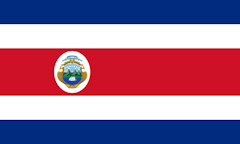 A relatively small country, coming in at 19,700 square miles, comfortably fitting inside of West Virginia, or if we’re going European, Slovenia, with room to spare. But, with over 5 million residents, it’s got 2.5 times the population of either of those. It’s bounded to the north by Nicaragua, to the south by Panama, and to the east and west, by the Atlantic and Pacific oceans. As a trivia note, it’s a mere 170 miles cross-country between the two oceans, an easy day trip between pretty much any part of the country. It’s a volcanic country, pretty literally, with 61 dormant and 6 active volcanoes.
A relatively small country, coming in at 19,700 square miles, comfortably fitting inside of West Virginia, or if we’re going European, Slovenia, with room to spare. But, with over 5 million residents, it’s got 2.5 times the population of either of those. It’s bounded to the north by Nicaragua, to the south by Panama, and to the east and west, by the Atlantic and Pacific oceans. As a trivia note, it’s a mere 170 miles cross-country between the two oceans, an easy day trip between pretty much any part of the country. It’s a volcanic country, pretty literally, with 61 dormant and 6 active volcanoes.
The “Tico” population is a mix of white, black, and indigenous ethnicity, almost entirely – a true melting pot. Unusual for a Latin American country, a mere half the population is Catholic, with another quarter Protestant, and almost all of the remainder identifying as “no religion”. Although there’s only one official national language, Spanish, there are three regional languages, Mekatelyu, Bribri, and Patois, which are “recognized” – the first and third being Caribbean creole languages, the second being the only remaining recognized indigenous language.
The cuisine is a blend of dishes and ingredients indigenous in the country, along with Spanish and African influences. There’s also a big Japanese and Chinese influence. It relies heavily on native tropical fruits and vegetables, and without any particular intention behind it, it’s not uncommon to find a meal being vegetarian or pescetarian. Corn is the dominant starch crop and shows up in most meals in some form.
The nationally recognized soup is pretty much Sopa de Porotos Negros, a usually vegetarian black bean soup. When it comes to bread, you can pretty much count on finding tortillas of some sort on the table at a meal. There are Costa Rican empanadas, and if I stuck to my original theme in this project, I’d showcase those, but honestly in two weeks in the country I don’t think I ever saw one, none of my friends there ever talk about them, and none of the recipes showcased anything new to this project. 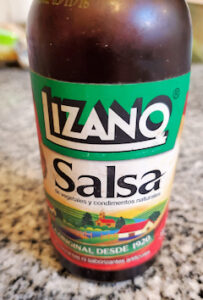 I decided to go with a popular afternoon snack tortilla, the Tortilla de Queso, cheese tortillas, something that I saw at least a few times, and also just something a bit different, that many of us probably haven’t come across.
I decided to go with a popular afternoon snack tortilla, the Tortilla de Queso, cheese tortillas, something that I saw at least a few times, and also just something a bit different, that many of us probably haven’t come across.
I also decided to make my own version of the national condiment, always on the table, Salsa Lizano. Now, this sauce is right on a century old, having been invented by the Lizano company in 1920. It’s basically a vegetable based Worcestershire Sauce. Now, every recipe I found online was based on a sort of fresh blend of chili, onion, and carrot, with a fairly basic mix of spices, and all touting how close they were to the original. Interestingly, the ingredients for the commercial sauce, while kept semi-secret, or at least the quantities, are supposedly a fermented, rather than fresh, blend of sugar, salt, cauliflower, cucumber, onion, carrot, black pepper, mustard, turmeric, and MSG – the majority of which don’t appear in any of the online recipes. Given that the resulting sauce from the online recipes I found don’t look or taste anything like the commercial sauce, I might try experimenting with the listed ingredients some time – because I love Salsa Lizano and use it in place of Worcestershire when I want to keep something vegetarian, though it’s near impossible for me to get down here.
So this is what I ended up using for the sauce, and I like the fresh sauce that comes out of it – a mildly spicy, very carroty sauce of onion, dried chilies (rehydrated), carrot, lemon juice, vinegar, molasses, salt, sugar, pepper, and cumin. It just, as I noted, and you can see in the final photo, doesn’t look or taste anything like Lizano. After rehydrating the chilies, I simply blended all the ingredients together with a little of the rehydrating water to smooth it out. I think I’d need to use not just the correct ingredients, but it certainly needs some fermenting involved to make something closer to the original.
For our Tortillas de Queso we have a cup and a half of masarepa, the same finely ground, parcooked cornmeal that I used to make the Colombian empanaditas recently. A cup of water, a mixed cup of shredded mozzarella, gouda, and parmesan; 2 Tb sour cream, 2Tb butter, 1 tsp salt, and 1½ tsp sugar.
All mixed together and left to hydrate the cornmeal for about an hour, covered.
Then divided into portions, rolled into balls, and pressed out to about 1/4″ thick rounds on some baking, or other non-stick paper.
Onto a hot griddle over low heat, dry – they have enough fat in them to create their own browning surface.
About 4-5 minutes to get nicely browned, then flip and brown the other side. And that’s all there is to it! Ready to snack on or serve with our soup. By the way, I found that these went really well with the fresh vegetable faux Lizano sauce, though not so well with the real stuff. The reverse was true with the soup….
A pound of black beans, soaked overnight. An onion, and roughly equal amounts of red bell pepper, carrot, and celery (each about a cup chopped), a bunch of cilantro, a couple of cloves of garlic, one hot chili, a teaspoon of ground ginger, and half a teaspoon of ground cumin. Two quarts of chicken or vegetable stock not pictured. Salt and pepper to taste at the end – much of that will depend on the seasoning of your stock.
In a tablespoon of vegetable oil, cook the chopped onion, carrot, celery, pepper, and chili until soft, about ten minutes.
Add the chopped cilantro (stems and all), garlic, and spices, and cook for a couple of minutes longer.
Add the pre-soaked beans and the stock, bring to a boil, reduce the heat to low, cover, and cook for about two hours at a simmer, until the beans are done – nice and tender, with just a hint of a resistance.
Add salt and pepper to taste.
And, serve. Traditional garnishes are some sliced avocado and radishes, half a hard boiled egg, and a dollop of sour cream. You can see the two sauces – the traditional Lizano a dark, semi-thick (texture of ketchup) and very dark brown sauce, the internet-driven vegetable sauce a brick orange from the carrot and chilies, and a bit thicker – though of course that depends on how much of the liquid you added to it. The soup, delicious, and even better with a spoonful or so of the classic Lizano. The tortillas, tasty on their own, better with the carrot sauce, but honestly, not one of my favorite things that I’ve made, though my next door neighbor loves them, and loves them even more left to chill and harden – I guess it’s like nibbling on a block of cheese with a toasted cornmeal crust. I’d make the soup again, and some day, I may get around to experimenting with my own version of Salsa Lizano.
Next time, we’re off to Croatia!
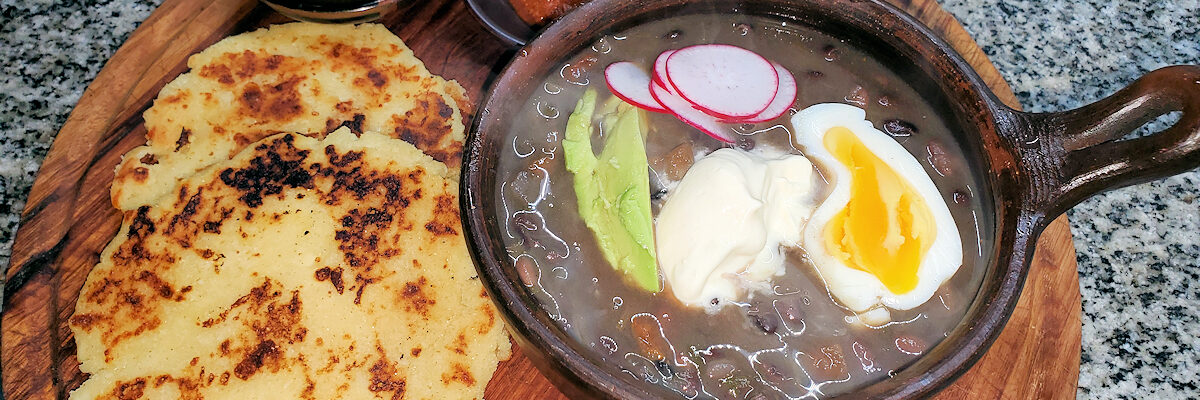
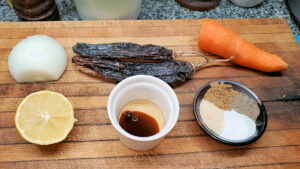
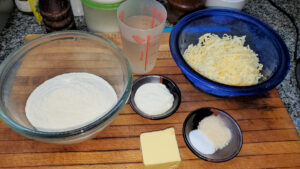

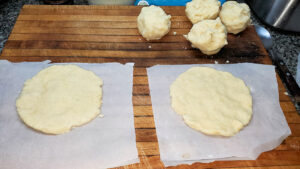


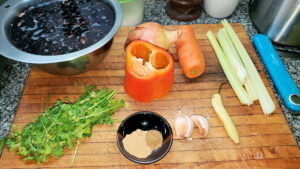
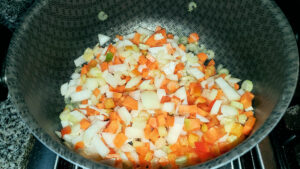
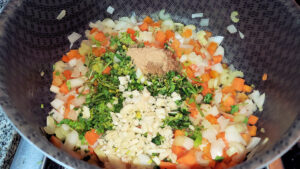
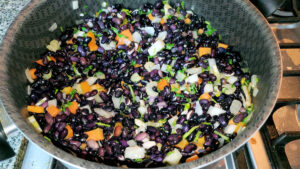
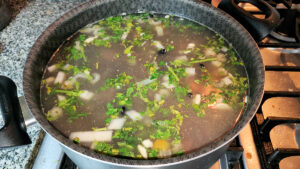
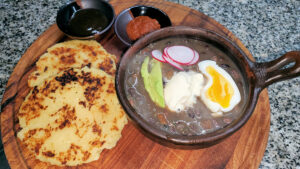
[…] time, we’re off to Costa Rica. Pura […]
[…] black bean soups or ajiaco-sancocho type soups, both of which I’ve made recently in the Costa Rican and Colombian entries. I ended up picking a more unique, if maybe less common, Caldo de […]